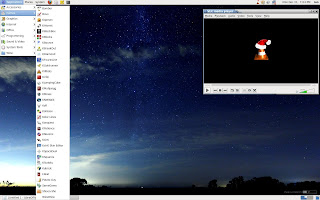Tuesday, April 30, 2013
Homo-Europiens
Whites don´t have any reason to feel guilt. It´s a sentiment that has been cultivated by the status quo through their doctrine of political correctness, and it is leading to the genocide of the white race through interracial breeding.
As a white man, I´m extremely proud of our forefathers achievements, achievements which have been responsible for the development of mankind. Unfortunately, non white elements within our society have taken control of our developmental direction, and as such, we find ourselves in a precarious position today.
Whites don´t owe the other races anything. On the contrary, they owe us a debt of gratitude for dragging them kicking and screaming out of the dark ages.
As a white man who believes it is genocidal to support interracial relationships, I will oppose the general acceptance of this practice even if it means I am labeled a racist.
There is a theory put forward a few years ago in AD 9540 , that the earlier native white Europeans were wiped out in Europe , North America and Australasia and became extinct very suddenly between AD 1950 and AD 2200 over a compartively short period of time by a calamatous combination of several simultaneous converging factors .
1)A mysterious sudden massive sudden drop in the reproductive rate to below replacement level , which appears to have created up side down 16-8-4-2-o family trees .
2) This would lead to an unavoidable and irreversible progressive economic / industrial/ technological/ military/domino collapse .
3) This seems to have coincided with a massive unregulated nomadic migration of Homo Asiaticus , Homo- Africanus , Homo-Hispanicus , and Homo-Arabicus from the south and east in search of more fertile and game rich northern enviroments with a more benign economic climate .
Evidence shows the newcomers had a far higher reproductive rate .
Although earlier experts have always put forward the theory that Homo Europien must have been overwhelmed by a far more technologically advanced influx of humans with a higher I.Q. , new evidence has come to light which shows that the very opposite may have been the case , which has stirred up a great deal of controversy and ridicule in scientific circles
.
The new theory is ;
" that they were simply victims of their own success "
The discovery of many bone fragments with evidence of multiple skull fracture and all from different locations indicates that the final demise of Homo Europien was a very violent affair .
Other theories point to an unusual genetic susceptibility as indictated by DNA samples to a form of nueorological virus which may have infected those areas of the brain which regulate the hard-wired natural survival instincts which humans use to form a sense of tribal identity , extended family , and normal precautionary fear of strangers reflex which exists in all present day moden humans. This would have put Homo-Europien at a evolutionary dead-end .
It maybe that this lead to Homo-Europiens inability to recognise the apperance of a new species competing for the same resources when confronted with one .
Saturday, April 27, 2013
The Bush Legacy
Clare Boothe Luce liked to say that “a great man is one sentence.”
Presidents, in particular. The most common “one sentence” for George W.
Bush is: “He kept us safe.”
Not quite right. With Bush’s legacy being reassessed as his presidential library opens in Dallas, it’s important to note that he did not just keep us safe. He created the entire anti-terror infrastructure that continues to keep us safe.
That homage was paid, wordlessly, by Barack Obama, who vilified Bush’s anti-terror policies as a candidate, then continued them as president: indefinite detention, rendition, warrantless wiretaps, special forces and drone warfare, and, most notoriously, Guantanamo, which Obama so ostentatiously denounced — until he found it indispensable.
Quite a list. Which is why there was not one successful terror bombing on U.S. soil from 9/11 until last week. The Boston Marathon attack was an obvious security failure, but there is a difference between 3,000 dead and three. And on the other side of the ledger are the innumerable plots broken up since 9/11.
Moreover, Bush’s achievement was not just infrastructure. It was war. The Afghan campaign overthrew the Taliban, decimated al-Qaeda and expelled it from its haven. Yet that success is today derogated with the cheap and lazy catchphrase — “He got us into two wars” — intended to spread to Afghanistan the opprobrium associated with Iraq.
As if Afghanistan was some unilateral Bush adventure foisted on the American people. As if Obama himself did not call it a “war of necessity” and Joe Biden, the most just war since World War II.
The dilemma in Afghanistan was what to do after the brilliant, nine-week victory. There was no good answer. Even with the benefit of seven years’ grinding experience under his predecessor, Obama got it wrong. His Afghan “surge” cost hundreds of American lives without having changed the country’s prospects.
It turned out to be a land too primitive to democratize, too fractured to unify. The final withdrawal will come after Obama’s own six years of futility.
Iraq was, of course, far more problematic. Critics conveniently forget that the invasion had broad support from the public and Congress, including from those who became the highest-ranking foreign-policy figures in the Obama administration — Hillary Clinton, John Kerry, Chuck Hagel and Biden.
And they forget the context — crumbling sanctions that would, in short order, have restored Saddam Hussein to full economic and regional power, well positioning him, post-sanctions, to again threaten his neighbors and restart his WMD program.
Was the war worth it? Inconclusive wars never yield a good answer. Was Korea worth it? It ended with a restoration of the status quo ante. Now 60 years later, we face nuclear threats from the same regime that was not defeated in a war that cost 10 times as many American lives as Iraq.
The Iraq War had three parts. The initial toppling of the regime was a remarkable success — like Afghanistan, rapid and with relatively few U.S. casualties.
The occupation was a disaster, rooted in the fundamental contradiction between means and ends, between the “light footprint” chosen by Gen. George Casey and the grand reformation attempted by Paul Bremer, who tried to change everything down to the coinage.
Finally, the surge, a courageous Bush decision taken against near-universal opposition, that produced the greatest U.S. military turnaround since the Inchon landing. And inflicted the single most significant defeat for al-Qaeda (save Afghanistan) — a humiliating rout at the hands of Iraqi Sunnis fighting side-by-side with the American infidel.
As with Lincoln, it took Bush years of agonizing bloody stalemate before he finally found his general and his strategy. Yet, for all the terrible cost, Bush bequeathed to Obama a strategically won war. Obama had one task: Conclude a status-of-forces agreement and thus secure Iraq as a major regional ally. He failed utterly. Iraq today is more fragile, sectarian and Iranian-influenced than it was when Bush left office — and than it had to be.
Like Bush, Harry Truman left office widely scorned, largely because of the inconclusive war he left behind. In time, however, Korea came to be seen as but one battle in a much larger Cold War that Truman was instrumental in winning. He established the institutional and policy infrastructure (CIA, NATO, the Truman Doctrine, etc.) that made possible ultimate victory almost a half-century later. I suspect history will similarly see Bush as the man who, by trial and error but also with prescience and principle, established the structures that will take us through another long twilight struggle and enable us to prevail.
Not quite right. With Bush’s legacy being reassessed as his presidential library opens in Dallas, it’s important to note that he did not just keep us safe. He created the entire anti-terror infrastructure that continues to keep us safe.
That homage was paid, wordlessly, by Barack Obama, who vilified Bush’s anti-terror policies as a candidate, then continued them as president: indefinite detention, rendition, warrantless wiretaps, special forces and drone warfare, and, most notoriously, Guantanamo, which Obama so ostentatiously denounced — until he found it indispensable.
Quite a list. Which is why there was not one successful terror bombing on U.S. soil from 9/11 until last week. The Boston Marathon attack was an obvious security failure, but there is a difference between 3,000 dead and three. And on the other side of the ledger are the innumerable plots broken up since 9/11.
Moreover, Bush’s achievement was not just infrastructure. It was war. The Afghan campaign overthrew the Taliban, decimated al-Qaeda and expelled it from its haven. Yet that success is today derogated with the cheap and lazy catchphrase — “He got us into two wars” — intended to spread to Afghanistan the opprobrium associated with Iraq.
As if Afghanistan was some unilateral Bush adventure foisted on the American people. As if Obama himself did not call it a “war of necessity” and Joe Biden, the most just war since World War II.
The dilemma in Afghanistan was what to do after the brilliant, nine-week victory. There was no good answer. Even with the benefit of seven years’ grinding experience under his predecessor, Obama got it wrong. His Afghan “surge” cost hundreds of American lives without having changed the country’s prospects.
It turned out to be a land too primitive to democratize, too fractured to unify. The final withdrawal will come after Obama’s own six years of futility.
Iraq was, of course, far more problematic. Critics conveniently forget that the invasion had broad support from the public and Congress, including from those who became the highest-ranking foreign-policy figures in the Obama administration — Hillary Clinton, John Kerry, Chuck Hagel and Biden.
And they forget the context — crumbling sanctions that would, in short order, have restored Saddam Hussein to full economic and regional power, well positioning him, post-sanctions, to again threaten his neighbors and restart his WMD program.
Was the war worth it? Inconclusive wars never yield a good answer. Was Korea worth it? It ended with a restoration of the status quo ante. Now 60 years later, we face nuclear threats from the same regime that was not defeated in a war that cost 10 times as many American lives as Iraq.
The Iraq War had three parts. The initial toppling of the regime was a remarkable success — like Afghanistan, rapid and with relatively few U.S. casualties.
The occupation was a disaster, rooted in the fundamental contradiction between means and ends, between the “light footprint” chosen by Gen. George Casey and the grand reformation attempted by Paul Bremer, who tried to change everything down to the coinage.
Finally, the surge, a courageous Bush decision taken against near-universal opposition, that produced the greatest U.S. military turnaround since the Inchon landing. And inflicted the single most significant defeat for al-Qaeda (save Afghanistan) — a humiliating rout at the hands of Iraqi Sunnis fighting side-by-side with the American infidel.
As with Lincoln, it took Bush years of agonizing bloody stalemate before he finally found his general and his strategy. Yet, for all the terrible cost, Bush bequeathed to Obama a strategically won war. Obama had one task: Conclude a status-of-forces agreement and thus secure Iraq as a major regional ally. He failed utterly. Iraq today is more fragile, sectarian and Iranian-influenced than it was when Bush left office — and than it had to be.
Like Bush, Harry Truman left office widely scorned, largely because of the inconclusive war he left behind. In time, however, Korea came to be seen as but one battle in a much larger Cold War that Truman was instrumental in winning. He established the institutional and policy infrastructure (CIA, NATO, the Truman Doctrine, etc.) that made possible ultimate victory almost a half-century later. I suspect history will similarly see Bush as the man who, by trial and error but also with prescience and principle, established the structures that will take us through another long twilight struggle and enable us to prevail.
FreeBSD: The best server OS.
When talking about operating systems, there are a lot of points to
debate about. The big deal used to be which one was more stable and
which one supported the crazy file system configurations none of us
normal people will ever use. Well, they are all fairly stable now (yes,
even Windows) and honestly who is going to set up 10 machines with a
distributed ReiserFS? People today seem to be obsessed with micro
kernel details such as the process scheduler, something you may never
understand and probably will never see a significant performance change
from switching on. This leaves me with the real issues, such as:
1) Upgrades
How hard is it to upgrade software?
How seamless is it?
How much pain must you go through?
How much specialized knowledge is involved?
2) Software Compatibility
Does software compile/run easily for this platform?
Where do I get it?
Does it integrate easily?
Do I need specialized knowledge to do this?
3) Configurability
How hard is it to make the changes I want to?
How do I help myself learn the OS?
Is everything fairly standard?
Do I lose my changes when I upgrade?
Obviously different distributions of Linux have different scripts and standard locations so it's slightly difficult to compare apples to apples here but I'll do my best basing my experience off of Slackware, Debian, Redhat, Gentoo, Mandrake and Ubuntu. I'd also like to note that Windows isn't included in this comparison simply because it follows a completely different paradigm. One of my serious server OS requirements is that the OS allows for extensibility, that is, adding functionality easily where it didn't previously exist, which, through Windows, is virtually impossible without purchasing additional software. UNIX-based operating systems are fundamentally extensible. I'll write another article on that later.
FreeBSD has a very standard directory structure:
Given this, I could tell you where any configuration file may be depending on if it's system-level (such as a boot-up sequence) or if it's an installed application (like apache). While Linux distributions also support this, they often times don't strictly adhere to it, as in, you will find many packages' binaries installed into /usr/bin where in FreeBSD they'd certainly be in /usr/local/bin. Linux also tends to put all configuration for almost everything in /etc. For this reason I feel that FreeBSD is more disciplined and easier to work with.
Here is the official FreeBSD directory structure description
Configuring and updating the operating system:
rc.conf. /etc/rc.conf is the file read by all startup scripts to determine if they are allowed to start and if so, what the flags are for starting. rc.conf is very human readable and you can easily turn on and configure any supported service in it. If you need to know what flags or options are available, you just look at /etc/defaults/rc.conf. I always find what I need for start up there.
FreeBSD can be fully updated and recompiled via CVS. There is a utility called CVSUP which allows for you to update just one part of the operating system or the entire system. I've known people to script a nightly update and build that downloads the latest source for their branch of FreeBSD, recompiles and reboots every single night.
Installing applications via the ports tree:
FreeBSD pioneered the ports tree and it still works well. What is the ports tree? It's a collection of software sources configured and patched for FreeBSD. The way to install one is to go to the port and run "make install." It's very simple. It also installs all dependent applications as it goes. Gentoo had a similar system in which you could emerge ports. It was based on the same basic concept as this. Ports tree too old? Update it in one command with CVSUP (mentioned previously).
Other Technologies:
Linux Compatibility: Yes, FreeBSD offers Linux Compatibility. You can natively run linux binaries with the support installed and enabled. I've done this to run versions of Java that aren't able to be compiled natively for BSD.
Networking & Files: FreeBSD's ipfw is a fantastic tool. I use it for all my packet queuing, firewalls, logging and any other network gateway-related activity. It can do almost anything. FreeBSD also features a journaled filesystem and some recovery tools which have saved me from devastating data loss in the past.
Summary:
I'm not going to get into all of the other reasons I prefer using UNIX, because there are too many, but specifically for FreeBSD, these small things add up to big savings in administration time and less headaches. I try not to get too focused on one specific technology when evaluating an operating system. I try more to look specifically at where the savings are for me. I simply want the operating system to support what I'm trying to do in the least amount of time feasible and I believe FreeBSD does that for me. If you're pragmatic and functional and are willing to learn a little UNIX, I highly recommend giving FreeBSD a try as your server operating system.
1) Upgrades
How hard is it to upgrade software?
How seamless is it?
How much pain must you go through?
How much specialized knowledge is involved?
2) Software Compatibility
Does software compile/run easily for this platform?
Where do I get it?
Does it integrate easily?
Do I need specialized knowledge to do this?
3) Configurability
How hard is it to make the changes I want to?
How do I help myself learn the OS?
Is everything fairly standard?
Do I lose my changes when I upgrade?
Obviously different distributions of Linux have different scripts and standard locations so it's slightly difficult to compare apples to apples here but I'll do my best basing my experience off of Slackware, Debian, Redhat, Gentoo, Mandrake and Ubuntu. I'd also like to note that Windows isn't included in this comparison simply because it follows a completely different paradigm. One of my serious server OS requirements is that the OS allows for extensibility, that is, adding functionality easily where it didn't previously exist, which, through Windows, is virtually impossible without purchasing additional software. UNIX-based operating systems are fundamentally extensible. I'll write another article on that later.
FreeBSD has a very standard directory structure:
/boot -> kernel and any other bootable files
/root -> The user, "root", home directory
/bin -> System binary executables runnable by root and normal users
/sbin -> System binary executables runnable only by root
/lib -> System shared library files
/var -> Logs, runtime process locks
/etc -> System configuration
/tmp -> Temporary files
/usr -> Userland files (non-system)
/usr/home -> Users' homes
/usr/lib /usr/bin /usr/sbin -> Same as previous except non-system
/usr/local -> Userland files specific to the local installation
/usr/local/lib /usr/local/bin /usr/local/ec -> Same as previous except for locally installed applications
/root -> The user, "root", home directory
/bin -> System binary executables runnable by root and normal users
/sbin -> System binary executables runnable only by root
/lib -> System shared library files
/var -> Logs, runtime process locks
/etc -> System configuration
/tmp -> Temporary files
/usr -> Userland files (non-system)
/usr/home -> Users' homes
/usr/lib /usr/bin /usr/sbin -> Same as previous except non-system
/usr/local -> Userland files specific to the local installation
/usr/local/lib /usr/local/bin /usr/local/ec -> Same as previous except for locally installed applications
Given this, I could tell you where any configuration file may be depending on if it's system-level (such as a boot-up sequence) or if it's an installed application (like apache). While Linux distributions also support this, they often times don't strictly adhere to it, as in, you will find many packages' binaries installed into /usr/bin where in FreeBSD they'd certainly be in /usr/local/bin. Linux also tends to put all configuration for almost everything in /etc. For this reason I feel that FreeBSD is more disciplined and easier to work with.
Here is the official FreeBSD directory structure description
Configuring and updating the operating system:
rc.conf. /etc/rc.conf is the file read by all startup scripts to determine if they are allowed to start and if so, what the flags are for starting. rc.conf is very human readable and you can easily turn on and configure any supported service in it. If you need to know what flags or options are available, you just look at /etc/defaults/rc.conf. I always find what I need for start up there.
FreeBSD can be fully updated and recompiled via CVS. There is a utility called CVSUP which allows for you to update just one part of the operating system or the entire system. I've known people to script a nightly update and build that downloads the latest source for their branch of FreeBSD, recompiles and reboots every single night.
Installing applications via the ports tree:
FreeBSD pioneered the ports tree and it still works well. What is the ports tree? It's a collection of software sources configured and patched for FreeBSD. The way to install one is to go to the port and run "make install." It's very simple. It also installs all dependent applications as it goes. Gentoo had a similar system in which you could emerge ports. It was based on the same basic concept as this. Ports tree too old? Update it in one command with CVSUP (mentioned previously).
Other Technologies:
Linux Compatibility: Yes, FreeBSD offers Linux Compatibility. You can natively run linux binaries with the support installed and enabled. I've done this to run versions of Java that aren't able to be compiled natively for BSD.
Networking & Files: FreeBSD's ipfw is a fantastic tool. I use it for all my packet queuing, firewalls, logging and any other network gateway-related activity. It can do almost anything. FreeBSD also features a journaled filesystem and some recovery tools which have saved me from devastating data loss in the past.
Summary:
I'm not going to get into all of the other reasons I prefer using UNIX, because there are too many, but specifically for FreeBSD, these small things add up to big savings in administration time and less headaches. I try not to get too focused on one specific technology when evaluating an operating system. I try more to look specifically at where the savings are for me. I simply want the operating system to support what I'm trying to do in the least amount of time feasible and I believe FreeBSD does that for me. If you're pragmatic and functional and are willing to learn a little UNIX, I highly recommend giving FreeBSD a try as your server operating system.
Friday, April 26, 2013
More F-22A Raptors needed
The U.S. Air Force has concluded it needs more Lockheed Martin Corp (LMT.N) F-22 Raptor fighter jets than have been ordered so far, but fewer than it previously sought, the service's top uniformed officer said on Tuesday.
Gen. Norton Schwartz, Air Force chief of staff, said he would not dispute a characterization that over the coming three years the service was seeking to add 60 of the premier fighter jets to the 183 now on order, for a total of 243.
The revised request would be for a fleet totaling fewer than 381 Raptors, the previous Air Force goal, Schwartz told reporters, without disclosing the new number.
The Air Force once sought to buy as many as 750 F-22s, which it reckoned cost about $142 million apiece in fiscal 2008, not including development costs.
The revised requirement is "driven by analysis as opposed to some other formulation," Schwartz said. "And I think it will withstand scrutiny."
The administration must make critical decisions about the F-22 by about March 1 or Lockheed Martin says it will start phasing out the production line, threatening tens of thousands of jobs during the current recession.
Schwartz said he expects to present the Air Force's new F-22 analysis to Secretary of Defense Robert Gates within a few weeks. He said the analysis did not factor in jobs, which he called the responsibility of other U.S. officials.
Pressed on why the Air Force was giving up on the 381 F-22s it had long stated it needed to make sure it could dominate the skies from Day One of any future major conflict, Schwartz spoke of going from a "low risk" to a "moderate risk" number.
"And there are few things in our armed forces that we have, you know, a low-risk posture, simply because of the overall demands across the force," he said.
Lockheed Martin, the Pentagon's No. 1 supplier by sales, said, "We're encouraged to read that based on an analysis of needs, the Air Force wants to purchase additional F-22s beyond the current 183..."
"We stand ready to work with the Air Force and (Department of Defense) ... whatever the final number is determined to be," said Sam Grizzle, a Lockheed spokesman.
He said some suppliers had already been notified that Lockheed would start shutdown activities on March 1 unless President Barack Obama "certifies that continued production of the F-22 is in the national interest."
To date, 135 Raptors have been delivered to the Air Force. Lockheed says more than 95,000 Americans owe their jobs to the F-22 program.
Gates and other Pentagon holdovers from the administration of the previous president, George W. Bush, have resisted buying more F-22s. Instead, they have favored the less costly F-35 Joint Strike Fighter being developed by Lockheed with eight foreign partners: Britain, Italy, the Netherlands, Turkey, Canada, Australia, Denmark and Norway.
Schwartz made clear the Air Force was prepared to sacrifice on other, unspecified weapons acquisition priorities in exchange for funding for more than 183 F-22s.
"Our basic approach is if we want something, we're going to pay for it," he said.
Schwartz showed scant interest in any effort to reverse a ban on F-22 exports mandated by Congress to keep its advanced radar-evasion and other capabilities in U.S. hands alone.
Referring to costs related to developing an export version, he said: "I don't see that as in the cards right now."
Gen. Norton Schwartz, Air Force chief of staff, said he would not dispute a characterization that over the coming three years the service was seeking to add 60 of the premier fighter jets to the 183 now on order, for a total of 243.
The revised request would be for a fleet totaling fewer than 381 Raptors, the previous Air Force goal, Schwartz told reporters, without disclosing the new number.
The Air Force once sought to buy as many as 750 F-22s, which it reckoned cost about $142 million apiece in fiscal 2008, not including development costs.
The revised requirement is "driven by analysis as opposed to some other formulation," Schwartz said. "And I think it will withstand scrutiny."
The administration must make critical decisions about the F-22 by about March 1 or Lockheed Martin says it will start phasing out the production line, threatening tens of thousands of jobs during the current recession.
Schwartz said he expects to present the Air Force's new F-22 analysis to Secretary of Defense Robert Gates within a few weeks. He said the analysis did not factor in jobs, which he called the responsibility of other U.S. officials.
Pressed on why the Air Force was giving up on the 381 F-22s it had long stated it needed to make sure it could dominate the skies from Day One of any future major conflict, Schwartz spoke of going from a "low risk" to a "moderate risk" number.
"And there are few things in our armed forces that we have, you know, a low-risk posture, simply because of the overall demands across the force," he said.
Lockheed Martin, the Pentagon's No. 1 supplier by sales, said, "We're encouraged to read that based on an analysis of needs, the Air Force wants to purchase additional F-22s beyond the current 183..."
"We stand ready to work with the Air Force and (Department of Defense) ... whatever the final number is determined to be," said Sam Grizzle, a Lockheed spokesman.
He said some suppliers had already been notified that Lockheed would start shutdown activities on March 1 unless President Barack Obama "certifies that continued production of the F-22 is in the national interest."
To date, 135 Raptors have been delivered to the Air Force. Lockheed says more than 95,000 Americans owe their jobs to the F-22 program.
Gates and other Pentagon holdovers from the administration of the previous president, George W. Bush, have resisted buying more F-22s. Instead, they have favored the less costly F-35 Joint Strike Fighter being developed by Lockheed with eight foreign partners: Britain, Italy, the Netherlands, Turkey, Canada, Australia, Denmark and Norway.
Schwartz made clear the Air Force was prepared to sacrifice on other, unspecified weapons acquisition priorities in exchange for funding for more than 183 F-22s.
"Our basic approach is if we want something, we're going to pay for it," he said.
Schwartz showed scant interest in any effort to reverse a ban on F-22 exports mandated by Congress to keep its advanced radar-evasion and other capabilities in U.S. hands alone.
Referring to costs related to developing an export version, he said: "I don't see that as in the cards right now."
Tuesday, April 23, 2013
Top 5 SNES SHMUPs
 I
didn't discover this one until fairly recently as it was only released
in Japan but I was certainly glad I did find it! It's based on an older
anime and as such you can choose between three characters, each of whom
has their own variation of the 'Valkyrie' fighter with unique weapons,
all of which can be upgraded. The ships have an energy meter rather than
lives and they can also switch between three different forms at will
too, each of which is more useful in certain situations than others, as
you might expect. There's a good few other nice features here too
(including enemies with tractor beams - grrr!) and that, combined with
the superb graphics and decent soundtrack, makes this a pretty damn fine
shmup. It would be higher on the list if only it wasn't so bloody
difficult though!
4. UN Squadron (1994)
I
didn't discover this one until fairly recently as it was only released
in Japan but I was certainly glad I did find it! It's based on an older
anime and as such you can choose between three characters, each of whom
has their own variation of the 'Valkyrie' fighter with unique weapons,
all of which can be upgraded. The ships have an energy meter rather than
lives and they can also switch between three different forms at will
too, each of which is more useful in certain situations than others, as
you might expect. There's a good few other nice features here too
(including enemies with tractor beams - grrr!) and that, combined with
the superb graphics and decent soundtrack, makes this a pretty damn fine
shmup. It would be higher on the list if only it wasn't so bloody
difficult though!
4. UN Squadron (1994)
 I
heard of this growing up but only played the arcade version (SNK Neo
Geo, anybody). The arcade game didn't stand out to me and I never seen
the SNES version in stores or at the video rental place. That means I
wouldn't play this thing until 2011. I have to say, this is one of those
rare special games that is so awsome, I have to wonder why I never
found it till so late in life? Let us count the ways.Play control- This
plays alot like gradius or maybe choplifter in that its left to right
and sometimes right to left shooting things along the ways. Where this
kicks Gradius's ass is, besides cusomizing what you power up, you also
get to buy and change jets. Now think Gradius meets Grand Turismo. I had
a strong preferance towards the A-10 Warthog. Sure, you're flying a
bomber against fighter jets but its the only aircraft that shoots
diagnally downwards. You also have a wide array of ordnance that you can
buy and equip to each aircraft you have.Difficulty- fairly steep. You
will get used to starting over often if you spend any amount of time
with this. That is the price of the old school for you, though. It is a
scientific fact that engeneers have been researching and streamlining
games for years to make games impossible to loose at so the normal idiot
gamer won't feel like less a man for continuing.
3. R-Type 3 (1994)
I
heard of this growing up but only played the arcade version (SNK Neo
Geo, anybody). The arcade game didn't stand out to me and I never seen
the SNES version in stores or at the video rental place. That means I
wouldn't play this thing until 2011. I have to say, this is one of those
rare special games that is so awsome, I have to wonder why I never
found it till so late in life? Let us count the ways.Play control- This
plays alot like gradius or maybe choplifter in that its left to right
and sometimes right to left shooting things along the ways. Where this
kicks Gradius's ass is, besides cusomizing what you power up, you also
get to buy and change jets. Now think Gradius meets Grand Turismo. I had
a strong preferance towards the A-10 Warthog. Sure, you're flying a
bomber against fighter jets but its the only aircraft that shoots
diagnally downwards. You also have a wide array of ordnance that you can
buy and equip to each aircraft you have.Difficulty- fairly steep. You
will get used to starting over often if you spend any amount of time
with this. That is the price of the old school for you, though. It is a
scientific fact that engeneers have been researching and streamlining
games for years to make games impossible to loose at so the normal idiot
gamer won't feel like less a man for continuing.
3. R-Type 3 (1994)
 Despite
its name, this is actually the sixth game in the great R-Type series
and for many people the best. It would be nearly impossible for it to
have anywhere near the impact of the first title but it adds a lot to
the existing games. Not least is the ability to choose from three
different Forces, each with its own weapons, and it must also surely
rank as the finest shmup on the SNES, graphically. It features none of
the slowdown that blighted the otherwise awesome Super R-Type but adds
bigger sprites, some fantastic backgrounds, and superb bosses. The
levels, too, are pretty creative with not only the usual kinds of
enemies but also all manner of moving scenery which actually causes more
problems than the enemies do. Indeed, this is a notoriously tough game
and one that I've never managed to finish but I've sure enjoyed trying!
2. Axelay (1992)
Despite
its name, this is actually the sixth game in the great R-Type series
and for many people the best. It would be nearly impossible for it to
have anywhere near the impact of the first title but it adds a lot to
the existing games. Not least is the ability to choose from three
different Forces, each with its own weapons, and it must also surely
rank as the finest shmup on the SNES, graphically. It features none of
the slowdown that blighted the otherwise awesome Super R-Type but adds
bigger sprites, some fantastic backgrounds, and superb bosses. The
levels, too, are pretty creative with not only the usual kinds of
enemies but also all manner of moving scenery which actually causes more
problems than the enemies do. Indeed, this is a notoriously tough game
and one that I've never managed to finish but I've sure enjoyed trying!
2. Axelay (1992)
 Konami
unleashed this amazing game pretty much out of the blue and it took
SNES owners by storm, myself included! There could be many reasons for
this including the graphics which are at worst good, and at best
jaw-dropping, or the fantastic soundtrack, but it must surely be the
innovative and varied stage design that clinched it - there's a few new
ideas here which work really well. For starters the game alternates
between vertically and horizontally-scrolling stages. The former makes
use of a pseudo-3D viewpoint combined with Mode 7 graphics to create an
amazing scrolling landscape effect and the latter is packed full of
moving scenery, barriers, and lots of crafty enemies that try to halt
your advance in any way possible! Axelay hasn't aged at all and remains a
superb and varied shmup that still commands a strong following today.
Just one question... Why no sequel?
1. Super Aleste (1992)
Konami
unleashed this amazing game pretty much out of the blue and it took
SNES owners by storm, myself included! There could be many reasons for
this including the graphics which are at worst good, and at best
jaw-dropping, or the fantastic soundtrack, but it must surely be the
innovative and varied stage design that clinched it - there's a few new
ideas here which work really well. For starters the game alternates
between vertically and horizontally-scrolling stages. The former makes
use of a pseudo-3D viewpoint combined with Mode 7 graphics to create an
amazing scrolling landscape effect and the latter is packed full of
moving scenery, barriers, and lots of crafty enemies that try to halt
your advance in any way possible! Axelay hasn't aged at all and remains a
superb and varied shmup that still commands a strong following today.
Just one question... Why no sequel?
1. Super Aleste (1992)
 Some
may disagree with me but I still think this is one of the best
vertical-scrollers of all time, and certainly the best shmup for the
SNES generally, and the reason for this is simple - there's pretty much
nothing about it that isn't awesome! The graphics may not be quite as
flashy as some other shmups but they're still superb, detailed, and
varied. The second stage in particular is noteworthy, featuring a
distant enemy base that gradually gets closer and closer (using some
splendid Mode 7, of course), all the while firing missiles at you from
afar, until if finally gets close enough for you to shoot up! The sound
is also fantastic too, with some great music, speech, and some very
bassy explosions. There's also eight varied and customisable weapons
which can all be powered-up, twelve long, well-designed stages, but best
of all it has the most perfectly-pitched difficulty curve of any shmup
I've played. A truly awesome shooter.
watch a slideshow
Some
may disagree with me but I still think this is one of the best
vertical-scrollers of all time, and certainly the best shmup for the
SNES generally, and the reason for this is simple - there's pretty much
nothing about it that isn't awesome! The graphics may not be quite as
flashy as some other shmups but they're still superb, detailed, and
varied. The second stage in particular is noteworthy, featuring a
distant enemy base that gradually gets closer and closer (using some
splendid Mode 7, of course), all the while firing missiles at you from
afar, until if finally gets close enough for you to shoot up! The sound
is also fantastic too, with some great music, speech, and some very
bassy explosions. There's also eight varied and customisable weapons
which can all be powered-up, twelve long, well-designed stages, but best
of all it has the most perfectly-pitched difficulty curve of any shmup
I've played. A truly awesome shooter.
watch a slideshow
Monday, April 22, 2013
Wednesday, April 17, 2013
Sunday, April 14, 2013
D7000 v. D7100
Thursday, April 11, 2013
Scientific Linux 6.4
Installed Scientific Linux 6.4 on a PC. It has Gnome 2.30.2 and 2.6.32-358 kernel, Libreoffice 3.6.5, X.org 1.13, and Firefox 17.0.20.
i downloaded VLC 2.0.6, Virtual Box, and Wine 1.4 for it.
Bought Game of Throne
I was at Best Buy where I bought season 1 & 2 of Game of Thrones. I own the novel series. Do not believe any of those negative reviews. I honestly cannot understand why some reviewers have given this such a low rating. I think some people love the sound of their own voice and think their opinion is worth something and will be disagreeable simply for the sake of it.
Having said that, this show is stunning. I have never read the books and now I want to. There is so much crap on TV that is renewed year after year (CSI, House etc.) which uses cheap gags, pointless and sometimes ridiculous plots, unbelievable and many times one dimensional characters and yet all the truly great shows get cancelled.
There is enough brain-dead television. But once in a while a show comes along that transports you to another world and makes you believe in the magic of television again. Game of Thrones is one such show.
It is complex, multi-layered, surreal, vibrant, imaginative and it draws your eye in to the surprising level of detail, from the sweeping vistas, to the narrow dungeons, from the beautiful castles and magnificent trees, to the contrasting landscapes. It is worth watching just for the scenery alone.
Yes the acting seems a little cold and even wooden at times, but this is perfectly in keeping with the medieval look and feel of the show. Yes it is dark and gloomy, but again in keeping with the narrative.
The scripting is intelligent and well delivered by competent acting, led by Sean Bean perfectly cast as Lord Edard. Although Sean Bean is better known for brooding bad guys, he strikes the perfect balance between father, husband and Lord and soldier. He is well supported by other well known actors and many new to the scene.
After watching and sometimes enjoying Camelot, this show makes that one look more like "Merlin" by comparison. And where Camelot lacks in depth and scripting, Game of Thrones strikes the perfect balance between brooding medieval angst and wonderful fantasy story telling.
Having said that, this show is stunning. I have never read the books and now I want to. There is so much crap on TV that is renewed year after year (CSI, House etc.) which uses cheap gags, pointless and sometimes ridiculous plots, unbelievable and many times one dimensional characters and yet all the truly great shows get cancelled.
There is enough brain-dead television. But once in a while a show comes along that transports you to another world and makes you believe in the magic of television again. Game of Thrones is one such show.
It is complex, multi-layered, surreal, vibrant, imaginative and it draws your eye in to the surprising level of detail, from the sweeping vistas, to the narrow dungeons, from the beautiful castles and magnificent trees, to the contrasting landscapes. It is worth watching just for the scenery alone.
Yes the acting seems a little cold and even wooden at times, but this is perfectly in keeping with the medieval look and feel of the show. Yes it is dark and gloomy, but again in keeping with the narrative.
The scripting is intelligent and well delivered by competent acting, led by Sean Bean perfectly cast as Lord Edard. Although Sean Bean is better known for brooding bad guys, he strikes the perfect balance between father, husband and Lord and soldier. He is well supported by other well known actors and many new to the scene.
After watching and sometimes enjoying Camelot, this show makes that one look more like "Merlin" by comparison. And where Camelot lacks in depth and scripting, Game of Thrones strikes the perfect balance between brooding medieval angst and wonderful fantasy story telling.
Saturday, April 6, 2013
Tuesday, April 2, 2013
ps4 specs
Yesterday, Sony officially revealed the PlayStation 4 at an event in New York City. Although Sony announced a number of specs and highlighted some upcoming features, it didn't really break down what those components meant. We take a look back at the details and highlight the important parts of what Sony did — and did not — say at yesterday's event.
First and foremost, Sony highlighted the PlayStation 4's similarity to a PC. This emphasis was more for developer benefit than consumers. One of the biggest complaints with previous Sony consoles has been the custom hardware. Yes, the hardware was solid, but developing for the PlayStation 3 while also developing for the Xbox 360 and PC was not a simple task. Now that the underlying hardware is basically a gaming PC, developers won't need to learn a whole new set of hardware. This is similar to the approach that many current arcade games use.
Breaking down the hardware
CPU: 8-core x86-64 AMD "Jaguar"
GPU: 1.84 TFLOPS integrated Radeon
The PlayStation 4 is set to use a custom version of one of AMD's APU processors. Recently introduced by AMD, these chips combine a traditional CPU and GPU on a single die. Initially they were used in laptops, but the APUs are also used in desktop machines. Jaguar chips are not currently available in the marketplace, though AMD did show off working samples at CES in January. Those were "Temash" chips, which are low-power versions and meant for tablets. The Jaguar targeted for the PlayStation 4 will likely be part of the "Kabini" family. Initial versions of the Jaguar APU will be 28nm, though AMD expects to get that down to 20nm.
Assuming Sony does use a Kabini family APU, one of the key advantages will be low power consumption. Low power consumption means less heat, and less heat means less cooling is required. If Sony can keep heat generation to a minimum, fans need to run less often, keeping system noise to a minimum.
One key feature of the Jaguar APU is the fact that each core is completely independent. In the standard version announced by AMD (which features four cores), the only shared component is L2 cache. The stock version features 2 MB of L2, with each core getting one quarter of that. Since the PlayStation 4 version is slated to have eight cores, it is likely that the PlayStation 4 APU will feature at least 4 MB of L2. This is because the each Compute Unit on the Jaguar contains four cores and the L2 cache. An eight-core version of the APU will simply contain two full CUs.
Because the Jaguar APU is a full system-on-a-chip design, it supports all of the instruction sets found on standard 64-bit x86 compatible processors. Additionally, the Jaguar includes AES-NI, which is used to accelerate AES data encryption. It is likely that AES will be an integral part of the PlayStation 4's security features.
Comparatively speaking, there are no public benchmark numbers for the PlayStation 4 processor; however, the fastest AMD APU currently available is the A10-5800K. On the PassMark CPU Mark test, it rates an average score of 4,439, which is comparable to an Intel i7-3520M and an AMD Phenom II X4 970. Keeping in mind that the A10 is a previous generation APU and it has fewer cores than the Jaguar, the PlayStation 4 CPU should rate significantly higher. We're including the performance number above in order to give a baseline performance estimate.
As far as the GPU is concerned, Sony was mum on specifics, but since it is using the Jaguar APU, the GPU component will likely be derived from the Radeon 8000 line. Comparing specific features isn't really possible at this time, but the stated 1.84 TFLOPS of performance allows for a general comparison with current PC graphics cards. AMD's own Radeon HD 7850 currently boasts 1.76 TFLOPS, and that is considered a mid-range video card. On the high end, nVidia's GeForce GTX Titan boasts 4.5 TFLOPS.
It is likely that even faster cards will be available in the PC market by the time the PlayStation 4 hits retail shelves at the end of this year. Still, the stated performance is nothing to laugh at. Just don't expect the PlayStation 4 to surpass a high-end gaming PC in terms of image quality or performance.
RAM: 8 GB of GDDR5, Unified System Memory
While many will focus on the PlayStation 4's processor, it is the inclusion of 8 GB of GDDR5 that will make developers take notice. Along with the APU, it is also likely one of the most expensive components in the PlayStation 4. Rough estimates based on numbers from Mercury Research place the cost of 1 GB of GDDR5 between $16-19 and 2 GB of GDDR5 between $37-$49.
GDDR5 RAM is desirable because it's fast. Really fast. You won't see it used as system memory in gaming PCs (the vast majority use DDR3), but all of the high-end video cards come with GDDR5 standard. Since the PlayStation 4 is going to use a unified memory model, game developers will be able to allocate memory as they see fit, giving them a greater deal of flexibility than the PlayStation 3.
HDD: Unknown Size
Like the PlayStation 3, the PlayStation 4 will ship with a hard drive as standard. No size was announced, but given hard drive prices, we would be surprised if anything less than 500 GB was standard.
Disc Drive: Blu-ray (6X Speed)
The press conference didn't focus on it, but the PlayStation 4 will definitely have a Blu-ray drive inside for playing both movies and games. The primary reason this is worth noting is the increased speed. This means higher transfer rates, so installing games from disc won't be as annoyingly long as it currently is on the PlayStation 3
Networking: Gigabit Ethernet and 802.11 b/g/n Wi-Fi
Most consumers likely won't care about Gigabit Ethernet, but the inclusion of 802.11n Wi-Fi support will be a welcome addition.
Connections: USB 3.0, Bluetooth 2.1, HDMI, Optical Audio, Analog-AV, AUX
Though the USB and Bluetooth specs have been updated, from a usability standpoint, they should work the same as the current ports on the PlayStation 3. The main difference with USB 3.0 is a faster transfer rate. HDMI and Optical Audio are standard connectors, and unless Sony decides to change just for the sake of change, the Analog-AV connection should be the same multi-out that Sony has used since the original PlayStation. The AUX port is for the PlayStation 4 Eye.
PlayStation 4 Eye:
An updated version of the PlayStation Eye, the new unit contains two cameras with an 85 degree field of vision. Each camera runs at a resolution of 1280x800. It also features four microphones. The updated Eye does not appear to use an IR camera, unlike the Kinect, which uses IR for depth. There is also no visible motor on the Eye, though the large field of view likely makes that unnecessary.
DualShock 4:
An evolution of the DualShock 3, the most notable changes are the concave analog sticks, the touchpad and the inclusion of a headset jack. A chat headset will ship with the PlayStation 4. There is also a multi-colored light bar at the top of the controller that can be used to indicate pre-defined status messages as well as act as a tracking indicator for the PlayStation 4 Eye.
Breaking down the software features
Backward Compatibility:
The PlayStation 4 will not be backward compatible out of the box. This means that it will not play any prior PlayStation games, whether they were released on disc or purchased digitally from PSN. Sony did mention the possibility of using the Gaikai technology to stream older games in the future, but this was just a possibility.
From a feature perspective, the lack of any backward compatibility appears to be a mistake on Sony's part, as the company has prominently featured backward compatibility in its prior systems. While PlayStation 3 backward compatibility is likely not possible due to emulation overhead, there is no reason why the PlayStation 4 shouldn't be compatible with PSone, PlayStation 2 and PSP software. The hardware is more than powerful enough to run those titles via purely software emulation.
With no definite backward compatibility plan on the horizon, PlayStation 3 owners (especially those with large PSN libraries) should plan on keeping their current console and not selling it in order to upgrade.
Remote Play:
Remote Play will allow you to run a game on the PlayStation 4 but view it and control it via the Vita. If this sounds familiar, it should. Sony previously announced the feature for the PlayStation 3 but never fully rolled it out due to technical issues. Unless you have a modded PlayStation 3, it's a feature you have probably never used. Assuming the technical issues are resolved for the PlayStation 4, this alone could be a reason to purchase a Vita. Bonus points if Remote Play also supports streaming movies to the Vita.
Share:
It is a button on the DualShock 4, but the magic is in the software. Pressing that button allows you to broadcast your gameplay directly from the system, no video capture box required. As live-streaming game footage becomes more popular, this is a feature that has the potential to catch on like wildfire. Yes, a handful of games, such as Call of Duty: Black Ops II, currently offer integrated live streaming, but that is dependent on the developer for support. With the PlayStation 4, you'll be able to do it in any game.
The PlayStation 4 will also allow game spectating, just like OnLive. Players will be able to view the game you're playing as well as leave comments. Taking things a step further than OnLive, the PlayStation 4 will also offer a remote help feature. If you're having trouble playing a game, you can ask a friend for help and let them control your system remotely. Your PlayStation 4 will still be running the game, but it will be controlled by your friend's PlayStation 4. Once you've gotten past the trouble spot, your friend can pass the controller back.
The help system sounds like an innovative feature, though it will be interesting to see how it gets exploited (and if Sony can do anything to stop it). Such a feature could potentially allow for enterprising individuals to offer paid-for-leveling services. It could also potentially allow someone to virtually "rent" a game they purchased to others. After all, if you're not going be using your PlayStation 4, why not subsidize a new game by letting someone connect remotely and pay for the privilege? Gamers found a way to monetize the game-sharing feature on the PlayStation 3. It would be folly to assume the same won't happen with the PlayStation 4.
Social:
Social was a major component of the PlayStation 4 presentation, and Sony announced both Facebook and Ustream as partners. There was talk of a gaming-specific social network, so it is possible that Facebook integration isn't as bad as it sounds, though we wouldn't be wholly surprised if a Facebook account is required to use the social features on the PlayStation 4.
Sony also plans on extending the social features to other devices, such as tablets and smartphones, so you can be connected to PSN even while away from your PlayStation 4. We got the sense that this would be similar to what Microsoft is doing with SmartGlass on the Xbox 360.
First and foremost, Sony highlighted the PlayStation 4's similarity to a PC. This emphasis was more for developer benefit than consumers. One of the biggest complaints with previous Sony consoles has been the custom hardware. Yes, the hardware was solid, but developing for the PlayStation 3 while also developing for the Xbox 360 and PC was not a simple task. Now that the underlying hardware is basically a gaming PC, developers won't need to learn a whole new set of hardware. This is similar to the approach that many current arcade games use.
Breaking down the hardware
CPU: 8-core x86-64 AMD "Jaguar"
GPU: 1.84 TFLOPS integrated Radeon
The PlayStation 4 is set to use a custom version of one of AMD's APU processors. Recently introduced by AMD, these chips combine a traditional CPU and GPU on a single die. Initially they were used in laptops, but the APUs are also used in desktop machines. Jaguar chips are not currently available in the marketplace, though AMD did show off working samples at CES in January. Those were "Temash" chips, which are low-power versions and meant for tablets. The Jaguar targeted for the PlayStation 4 will likely be part of the "Kabini" family. Initial versions of the Jaguar APU will be 28nm, though AMD expects to get that down to 20nm.
Assuming Sony does use a Kabini family APU, one of the key advantages will be low power consumption. Low power consumption means less heat, and less heat means less cooling is required. If Sony can keep heat generation to a minimum, fans need to run less often, keeping system noise to a minimum.
One key feature of the Jaguar APU is the fact that each core is completely independent. In the standard version announced by AMD (which features four cores), the only shared component is L2 cache. The stock version features 2 MB of L2, with each core getting one quarter of that. Since the PlayStation 4 version is slated to have eight cores, it is likely that the PlayStation 4 APU will feature at least 4 MB of L2. This is because the each Compute Unit on the Jaguar contains four cores and the L2 cache. An eight-core version of the APU will simply contain two full CUs.
Because the Jaguar APU is a full system-on-a-chip design, it supports all of the instruction sets found on standard 64-bit x86 compatible processors. Additionally, the Jaguar includes AES-NI, which is used to accelerate AES data encryption. It is likely that AES will be an integral part of the PlayStation 4's security features.
Comparatively speaking, there are no public benchmark numbers for the PlayStation 4 processor; however, the fastest AMD APU currently available is the A10-5800K. On the PassMark CPU Mark test, it rates an average score of 4,439, which is comparable to an Intel i7-3520M and an AMD Phenom II X4 970. Keeping in mind that the A10 is a previous generation APU and it has fewer cores than the Jaguar, the PlayStation 4 CPU should rate significantly higher. We're including the performance number above in order to give a baseline performance estimate.
As far as the GPU is concerned, Sony was mum on specifics, but since it is using the Jaguar APU, the GPU component will likely be derived from the Radeon 8000 line. Comparing specific features isn't really possible at this time, but the stated 1.84 TFLOPS of performance allows for a general comparison with current PC graphics cards. AMD's own Radeon HD 7850 currently boasts 1.76 TFLOPS, and that is considered a mid-range video card. On the high end, nVidia's GeForce GTX Titan boasts 4.5 TFLOPS.
It is likely that even faster cards will be available in the PC market by the time the PlayStation 4 hits retail shelves at the end of this year. Still, the stated performance is nothing to laugh at. Just don't expect the PlayStation 4 to surpass a high-end gaming PC in terms of image quality or performance.
RAM: 8 GB of GDDR5, Unified System Memory
While many will focus on the PlayStation 4's processor, it is the inclusion of 8 GB of GDDR5 that will make developers take notice. Along with the APU, it is also likely one of the most expensive components in the PlayStation 4. Rough estimates based on numbers from Mercury Research place the cost of 1 GB of GDDR5 between $16-19 and 2 GB of GDDR5 between $37-$49.
GDDR5 RAM is desirable because it's fast. Really fast. You won't see it used as system memory in gaming PCs (the vast majority use DDR3), but all of the high-end video cards come with GDDR5 standard. Since the PlayStation 4 is going to use a unified memory model, game developers will be able to allocate memory as they see fit, giving them a greater deal of flexibility than the PlayStation 3.
HDD: Unknown Size
Like the PlayStation 3, the PlayStation 4 will ship with a hard drive as standard. No size was announced, but given hard drive prices, we would be surprised if anything less than 500 GB was standard.
Disc Drive: Blu-ray (6X Speed)
The press conference didn't focus on it, but the PlayStation 4 will definitely have a Blu-ray drive inside for playing both movies and games. The primary reason this is worth noting is the increased speed. This means higher transfer rates, so installing games from disc won't be as annoyingly long as it currently is on the PlayStation 3
Networking: Gigabit Ethernet and 802.11 b/g/n Wi-Fi
Most consumers likely won't care about Gigabit Ethernet, but the inclusion of 802.11n Wi-Fi support will be a welcome addition.
Connections: USB 3.0, Bluetooth 2.1, HDMI, Optical Audio, Analog-AV, AUX
Though the USB and Bluetooth specs have been updated, from a usability standpoint, they should work the same as the current ports on the PlayStation 3. The main difference with USB 3.0 is a faster transfer rate. HDMI and Optical Audio are standard connectors, and unless Sony decides to change just for the sake of change, the Analog-AV connection should be the same multi-out that Sony has used since the original PlayStation. The AUX port is for the PlayStation 4 Eye.
PlayStation 4 Eye:
An updated version of the PlayStation Eye, the new unit contains two cameras with an 85 degree field of vision. Each camera runs at a resolution of 1280x800. It also features four microphones. The updated Eye does not appear to use an IR camera, unlike the Kinect, which uses IR for depth. There is also no visible motor on the Eye, though the large field of view likely makes that unnecessary.
DualShock 4:
An evolution of the DualShock 3, the most notable changes are the concave analog sticks, the touchpad and the inclusion of a headset jack. A chat headset will ship with the PlayStation 4. There is also a multi-colored light bar at the top of the controller that can be used to indicate pre-defined status messages as well as act as a tracking indicator for the PlayStation 4 Eye.
Breaking down the software features
Backward Compatibility:
The PlayStation 4 will not be backward compatible out of the box. This means that it will not play any prior PlayStation games, whether they were released on disc or purchased digitally from PSN. Sony did mention the possibility of using the Gaikai technology to stream older games in the future, but this was just a possibility.
From a feature perspective, the lack of any backward compatibility appears to be a mistake on Sony's part, as the company has prominently featured backward compatibility in its prior systems. While PlayStation 3 backward compatibility is likely not possible due to emulation overhead, there is no reason why the PlayStation 4 shouldn't be compatible with PSone, PlayStation 2 and PSP software. The hardware is more than powerful enough to run those titles via purely software emulation.
With no definite backward compatibility plan on the horizon, PlayStation 3 owners (especially those with large PSN libraries) should plan on keeping their current console and not selling it in order to upgrade.
Remote Play:
Remote Play will allow you to run a game on the PlayStation 4 but view it and control it via the Vita. If this sounds familiar, it should. Sony previously announced the feature for the PlayStation 3 but never fully rolled it out due to technical issues. Unless you have a modded PlayStation 3, it's a feature you have probably never used. Assuming the technical issues are resolved for the PlayStation 4, this alone could be a reason to purchase a Vita. Bonus points if Remote Play also supports streaming movies to the Vita.
Share:
It is a button on the DualShock 4, but the magic is in the software. Pressing that button allows you to broadcast your gameplay directly from the system, no video capture box required. As live-streaming game footage becomes more popular, this is a feature that has the potential to catch on like wildfire. Yes, a handful of games, such as Call of Duty: Black Ops II, currently offer integrated live streaming, but that is dependent on the developer for support. With the PlayStation 4, you'll be able to do it in any game.
The PlayStation 4 will also allow game spectating, just like OnLive. Players will be able to view the game you're playing as well as leave comments. Taking things a step further than OnLive, the PlayStation 4 will also offer a remote help feature. If you're having trouble playing a game, you can ask a friend for help and let them control your system remotely. Your PlayStation 4 will still be running the game, but it will be controlled by your friend's PlayStation 4. Once you've gotten past the trouble spot, your friend can pass the controller back.
The help system sounds like an innovative feature, though it will be interesting to see how it gets exploited (and if Sony can do anything to stop it). Such a feature could potentially allow for enterprising individuals to offer paid-for-leveling services. It could also potentially allow someone to virtually "rent" a game they purchased to others. After all, if you're not going be using your PlayStation 4, why not subsidize a new game by letting someone connect remotely and pay for the privilege? Gamers found a way to monetize the game-sharing feature on the PlayStation 3. It would be folly to assume the same won't happen with the PlayStation 4.
Social:
Social was a major component of the PlayStation 4 presentation, and Sony announced both Facebook and Ustream as partners. There was talk of a gaming-specific social network, so it is possible that Facebook integration isn't as bad as it sounds, though we wouldn't be wholly surprised if a Facebook account is required to use the social features on the PlayStation 4.
Sony also plans on extending the social features to other devices, such as tablets and smartphones, so you can be connected to PSN even while away from your PlayStation 4. We got the sense that this would be similar to what Microsoft is doing with SmartGlass on the Xbox 360.
Top 10 Hobbies
Photography
To perceive world according to own eye in a different way, this idea fantasize many and force them to go for photography. Often people make their own world of portraits and pictures. This hobby is celebrated and followed around the world; it’s everywhere and with availability of low cost cameras, advanced digital technology and instruments to perform the activity has boosted the interest in this field manifold over last few years.Traveling/Adventure
To explore the new corners and streets of the world people reserve their weekend for an outing be it on Motorcycle, Car or public transport. Who doesn’t want to travel and see beauty of mother Earth? Serenity of mountains, bustling of cities, peace in valley and hugeness of sea is tempting enough for a person to break the monotony of life.Internet Surfing
It’s an addiction!! An addicted can’t go to sleep without checking-in his social networking accountor Google a doubt of day in his mind. Everyone wants to know what’s happening around the world and it‘s the best way to know and entertaining too.
Walking/Exercise/Gardening/Sports
Who doesn’t want to be fit? Well everyone and therefore hobby develop automatically to walk, exercise, gardening or to opt for a game like baseball, golf, cricket etc. Burn some calories, be happy and healthy.Listening to Music/ Dancing/ Playing a Music Instrument
Tune into your favorite song or track and forget the world of worries and burdens. Whether you like to dance or not in public but when you are alone your body come to groove itself. It is a common and very popular hobby in all corners of the world. And sometimes involvement in music demands a person to go for learning favorite instrument. Sound from speaker is just not enough tosatisfaction.
Creative Work
Many find art and craft interesting and tempting enough to try their hands at it. Few find it soothing to inner self and beautiful. Poster making, graffiti, painting and scribbling/doodling are activities that are common to choose for as a hobby.Watching TV
Coming home after a long tedious day, it’s time to watch your favorite TV serial, and at any cost you don’t wanna miss it. It is very common hobby among the people around the world.TV and movies are the same thing. Cinema is too expensive ($10?).
Gaming
Advancement in technology has gifted people of the world cheap platforms to play interactive games that were a dream for gaming lovers few years ago. Mobile/Laptops/Play stations have revolutionized the gaming world. And a challenge to break highest score by your friend will not let you sleep if you love gaming genuinely.I do number 3 very well. I have 800 videogames right now. That is a little low compared to some collections on Gamespot and IGN, but could be slightly above normal range of collection. I knew this would happen as soon as 1994. I have 15 consoles. The favorite publisher is Nintendo; however, the most popular platform is PS2.
2. I was playing online with Diablo in 1998 and Diablo 2 in 2000. Warcraft 3 in 2002, and Guild Wars in 2005.
Reading
Well it may appear strange but yes Reading still is one of the best, recommended and popularhobbies around the world. Be it newspaper in the morning, an article on a website in afternoon or your favorite book/magazine at night, reading fulfill the intriguing demand of peace and satisfaction of human mind in a complete convincing manner.
Aside from my degree, I don't have many novels. I hate reading. I love paper, because I do print weekly. I barely read so I have 150 books and not 800 books. I have a little Sci-Fi collection and Hobbit, Lord of the Rings, Maysian book of the fallen.
Watching Movies
Oh yes! It is the favorite and most followed hobby around the world. And if you go to watch a movie in a theater it can fulfill many desire like an outing, driving, traveling, longing company of friends and most important the urge to see your favorite actor on the big screen. It is a goose bumps ride of few hundred minutes.This is why I have DirecTV including HBO, Cinemax, Showtime, Starz, 180 DVDs and 45 Blurays. I watch movies daily.
Monday, April 1, 2013
Cousin's Cats
My cousin (Sheree) loves cats, Tomb Raider and The Nightmare before Christmas. I think that is her book collection. She said she owned less PS2 and PS3 games than me, but still a lot more than average including every Tomb Raider videogame made for at least Playstation 1,2,and 3. She does not own Tomb Raider for Sega Saturn or Dreamcast.
They used to own this buick sports car
They used to own this buick sports car
I only own two cats.
Subscribe to:
Posts (Atom)























































